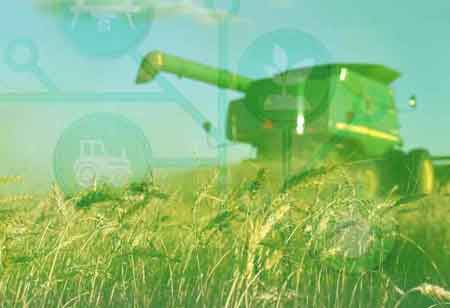Thank you for Subscribing to Agri Business Review Weekly Brief
Achieving Sustainable Agriculture: Strategies to Accelerate the Transition
The agriculture industry contributes largely to the GDP of numerous nations and employs a significant portion

By
Agri Business Review | Thursday, July 25, 2024
Stay ahead of the industry with exclusive feature stories on the top companies, expert insights and the latest news delivered straight to your inbox. Subscribe today.
This article discusses the importance of sustainable agriculture and provides strategies to help organizations accelerate the transition to a more sustainable future.
Fremont, CA: The agriculture industry contributes largely to the GDP of numerous nations and employs a significant portion of the global workforce. However, traditional farming methods negatively impact the environment, public health, and global food security. These methods encompass large-scale industrial farming, monoculture, and heavy use of synthetic fertilizers and pesticides. Sustainable agriculture offers a solution to these issues. It provides a path for establishing a food system that benefits all inhabitants of Earth and is more robust, fair, and environmentally sustainable.
Sustainable agriculture is more critical now than ever before. Farmers face increasing challenges in producing enough food to support a growing population due to unpredictable weather patterns, worsening soil degradation, and declining groundwater levels resulting from climate change.
Conventional agricultural practices exacerbate these problems by causing soil erosion, depleting biodiversity, and contaminating water resources.
Advancing Sustainable Agriculture
The Food and Agriculture Organization of the United Nations (FAO) states that unsustainable farming practices cause 80 percent of deforestation and 70 percent of global freshwater withdrawals. Accelerating the global transition to sustainable agricultural practices is crucial to tackle these issues. One approach to achieve this is by:
Implementing Regenerative Practices and Nature-Based Solutions:
The primary objectives of regenerative agriculture include enhancing biodiversity, improving soil health, and increasing the capacity of ecosystems to sequester carbon. This approach involves the implementation of agroforestry, cover crops, crop rotation, conservation tillage, and intercropping.
Adopting agroecological farming techniques can improve crop yields, reduce greenhouse gas emissions, and boost soil fertility. A study published in Nature Sustainability found that these methods can enhance soil quality and reduce nitrogen leaching by 21 percent compared to traditional farming practices.
Integrated Pest Management (IPM)
involves using various techniques to control diseases, weeds, and pests to minimize their impact on the environment and public health. These techniques include biological controls, crop rotation, the use of resistant plant varieties, and cultural practices. IPM can help increase crop yields, reduce the reliance on pesticides, and preserve natural habitats.
Adopting Agroforestry Practices:
Including trees and bushes in agricultural landscapes is known as agroforestry. By producing wood, fruits, and other non-timber forest products, this method can improve soil fertility, lessen erosion, boost biodiversity, and give farmers other revenue streams.
Agroforestry involves including trees and bushes in agricultural landscapes. This method can improve soil fertility, reduce erosion, increase biodiversity, and provide farmers with additional revenue streams by producing wood, fruits, and other non-timber forest products.
These are some of the sustainable agriculture practices. In addition to these practices, there are many more to be considered. These may include reducing susceptibility and enhancing resistance to the effects of climate change, promoting circularity in agriculture, integrating digital agricultural technology into the farming supply chain, and ensuring Predictability through advanced agro technologies.





